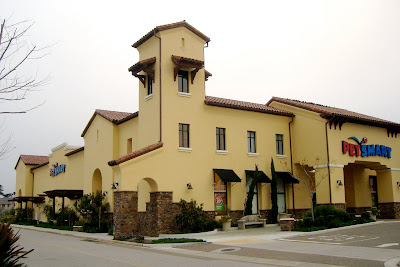
Media Credit: QwkDrw
Shopping 'Centre' Center
One or more large tenants, or anchor stores, planned in some types of shopping centers are often big box stores. In the past the typical design of these has been, well -- boxy. Not necessarily in an 'International Style' good way. And actually -- really big. And often almost inaccessible to pedestrians in an expensive expanse of vehicle parking. Think sports stadium for retail shoppers.
What may be missing is the 'centre' in a shopping center. As in a European tendency to high density and walkability. Individual community regulations have responded to site function and building appearance with land use zoning and architectural reviews. The cost of these types of large scale developments probably rises in some proportion to the amount of community regulations. Owners of existing shopping centers may want a way to upgrade their investment and return. The opportunity in this evolving process might be to maximize benefits for the project owner and the community. Consider site planning that introduces mixed land uses, high density and walkability (Mind the bicycles and hiking trails.) with private vehicle parking and public transportation connections.
Mixed Use Shopping Centers
Review and Approval Processes(Excerpt) "Encouraging mixed-use centers is one way of reducing suburban dependence on the automobile ... existing underutilized shopping areas can be converted into such centers, providing a mix of commercial, office, and residential uses, as well as improved pedestrian and transit access."Source: Center-ing Our Suburbs
Some citizens may not think that it is desirable or possible to improve the currently dominate low density designs for the built environment in suburbia. Legitimate findings and conclusions regarding an irrational 'Fear of Change' and its possible contribution to a NIMBY Syndrome may have been investigated by qualified experts and published the context of social psychology.
To me, it would be interesting to know more about these types of professional studies. Perhaps society may benefit from occasionally dissecting the public review and approval processes to learn more about the source and application of governmental powers and their appropriateness when used to manage change in the built environment.
..
